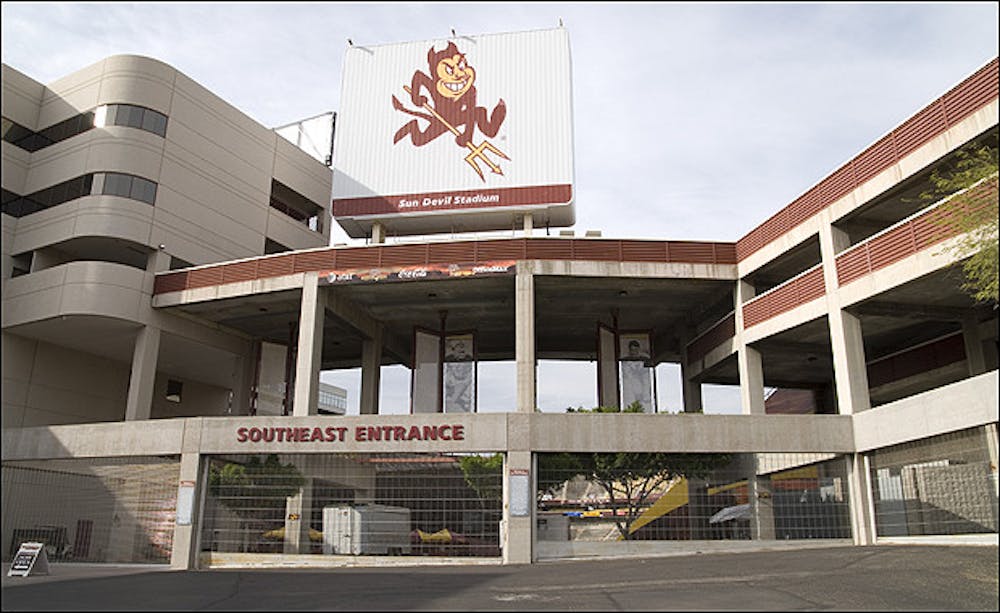Lawmakers and University officials are working to find ways to renovate Sun Devil Stadium without using state or University funds.
Steven Nielsen, assistant vice president for University real-estate development, said the 51-year-old stadium needs more than $160 million in improvements and repairs. Some of the areas that need repair include the concrete, field, restrooms, rusty steel, waterproofing and concessions stands.
As a way to fund these repairs, the House Ways and Means Committee passed a bill last week intended to create a sports-stadium district that would improve athletic facilities in all three state universities.
“What this bill does is create a long-financing vehicle to assist in funding those repairs in a way that it does not impact our academic growth funds or the state budgets,” Nielsen said. “We’re in a situation where [the] state can’t help us fund it because of their budget crisis. On the academic side, with all the trimming that we’ve had to do, we really don’t want to use academic funds, so we had to come up with something different.”
Virgil Renzulli, vice president for public affairs at ASU, said the bill is intended to create funds for the repairs by charging developers a fee equivalent to a property tax on prime commercial leases located on ASU property, a similar method of funding used by Cactus League Spring Training.
“The idea behind the bill is to create a stadium district for the county, which would then allow us … to charge an in-lieu of property tax for areas that are developed, which would then fund renovation in the stadium,” Renzulli said.
He said the repairs are necessary to keep the stadium alive.
If the stadium is not fixed in 12 to 15 years, it will have to be torn down, which would cost the University $25 million to do, Renzulli said.
“The reasonable thing to do is find a way of renovating it so that it doesn’t take any money out of the academic area, but in fact helps create funds that contribute to the academics,” Renzulli said.
He added that all the auxiliary enterprises of the University contribute to supporting classroom work.
“[A] certain amount of money that comes from the football program goes into the classroom,” Renzulli said. “You can’t have a football program if you don’t have a football stadium.”
Mark Brand, ASU’s assistant athletic director for communications, said the stadium is important for keeping the football team alive to create revenue for the athletic department. He said the 22 varsity sports make up $40 million of the annual operating budget that goes toward scholarships, equipment and staff, to name a few.
Renzulli said that because the sports stadium district depends on land development for funding, it can’t begin funding until the economy improves and land development picks up.
“Nobody now would try to attract a new development project until the economy turns and people are investing in it, but without this, there would be no funding for the stadium,” Renzulli said.
Because of this, Nielsen said the bill is “a long-term project.”
“First we have to have new commercial construction development to create revenue,” Nielsen said. “All we are trying to do is create this funding vehicle that will create funds coming in over a period of 50 years.”
Reach reporter at griselda.nevarez@asu.edu.




